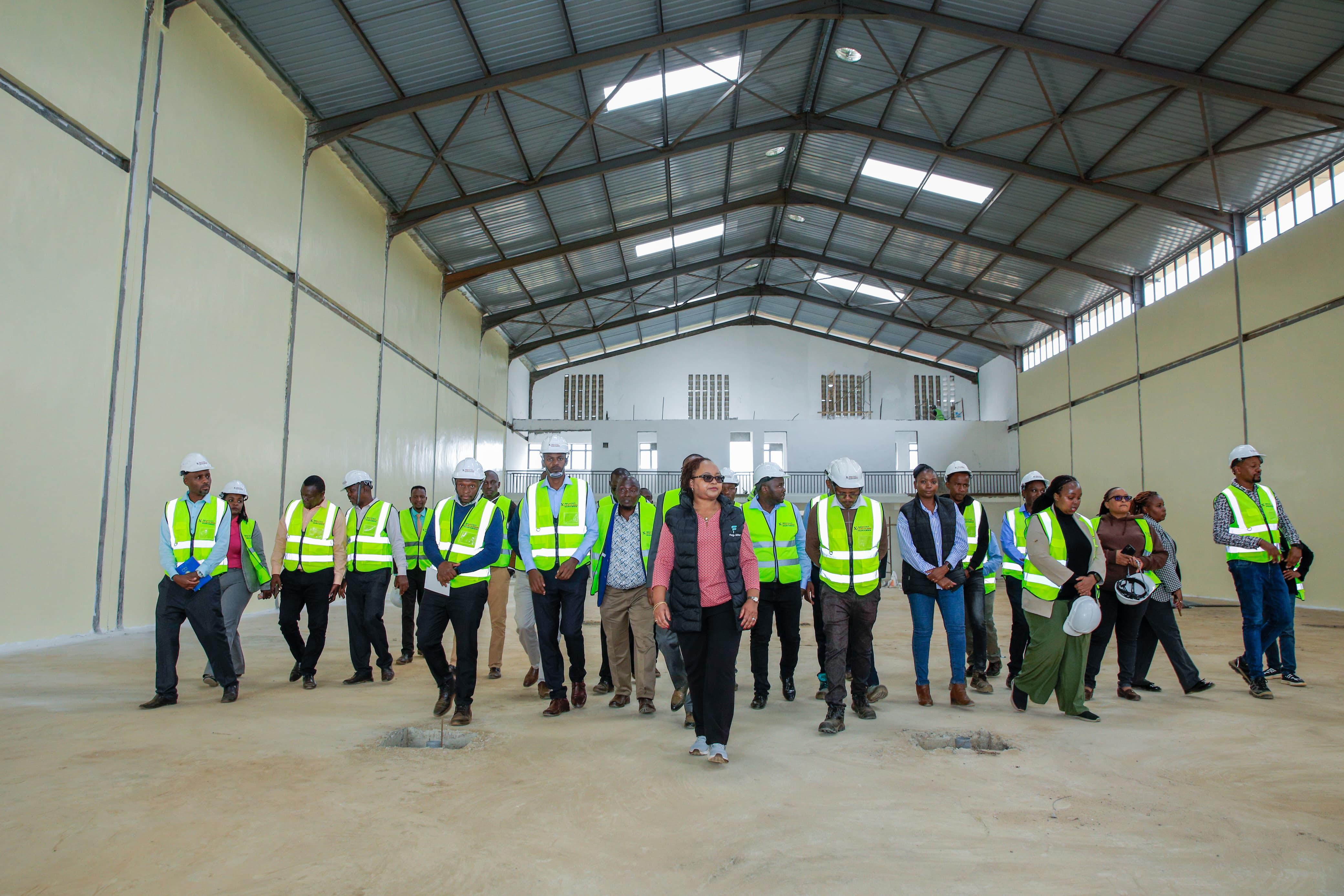
 Kirinyaga Governor Anne Waiguru leads a team of county officials during an inspection tour of Sagana Industrial Park
Kirinyaga Governor Anne Waiguru leads a team of county officials during an inspection tour of Sagana Industrial Park
The proposed Sagana Industrial Park is taking shape with the construction of county aggregation and industrial park, and special economic zone now 85 per cent complete.
Kirinyaga Governor Anne Waiguru has said the construction of warehouses, cold rooms and other infrastructures at the facility are going on smoothly within the set timelines.
Speaking while inspecting the project on Wednesday, she said 18 investors shortlisted to set up factories at the industrial park are raring to go once all the infrastructure are in place.
Waiguru said the shortlisted investors will set up industries dealing in the processing and manufacturing of goods for export, especially agricultural, leather and textiles.
“This project is a game-changer for Kirinyaga. We are not only creating infrastructure but unlocking value chains for our farmers and generating sustainable employment opportunities for our young people,” she said.
Waiguru said the customs-controlled area has already been fully fenced with the Export Processing Zone (EPZ) advancing on steadily.
“One warehouse is at 95 per cent while the others are at around 80 per cent only awaiting floor casting and wall finishes,” she explained.
The governor said the county has committed funds to build two additional warehouses to expand the park’s capacity.
The facility is also in the process of getting the necessary amenities like water, road network, security and electricity connection.
Sagana Industrial Park will be the first climate smart agro-industrial city in central region, promoting agro-processing and manufacturing and will be a source of employment for many residents.
The county plans to advertise for lease of land and warehouses at the park.
“We are positioning Sagana to become a key industrial hub in the region. This development is projected to create more than 5,000 direct and indirect job opportunities for Kirinyaga residents,” she said.
Waiguru also highlighted the broader vision behind the project, which aligns with the national Bottom-up Economic Transformation Agenda (BETA).
“This is how we bring BETA to life—by investing in real infrastructure that supports production, value addition, and access to markets,” she added.
The inspection tour also included ongoing flood mitigation efforts through the construction of dykes to protect the park from seasonal flooding.
“We are ensuring that this
facility is not only functional but resilient. Every detail is being considered
to make it sustainable in the long run,” she added.












